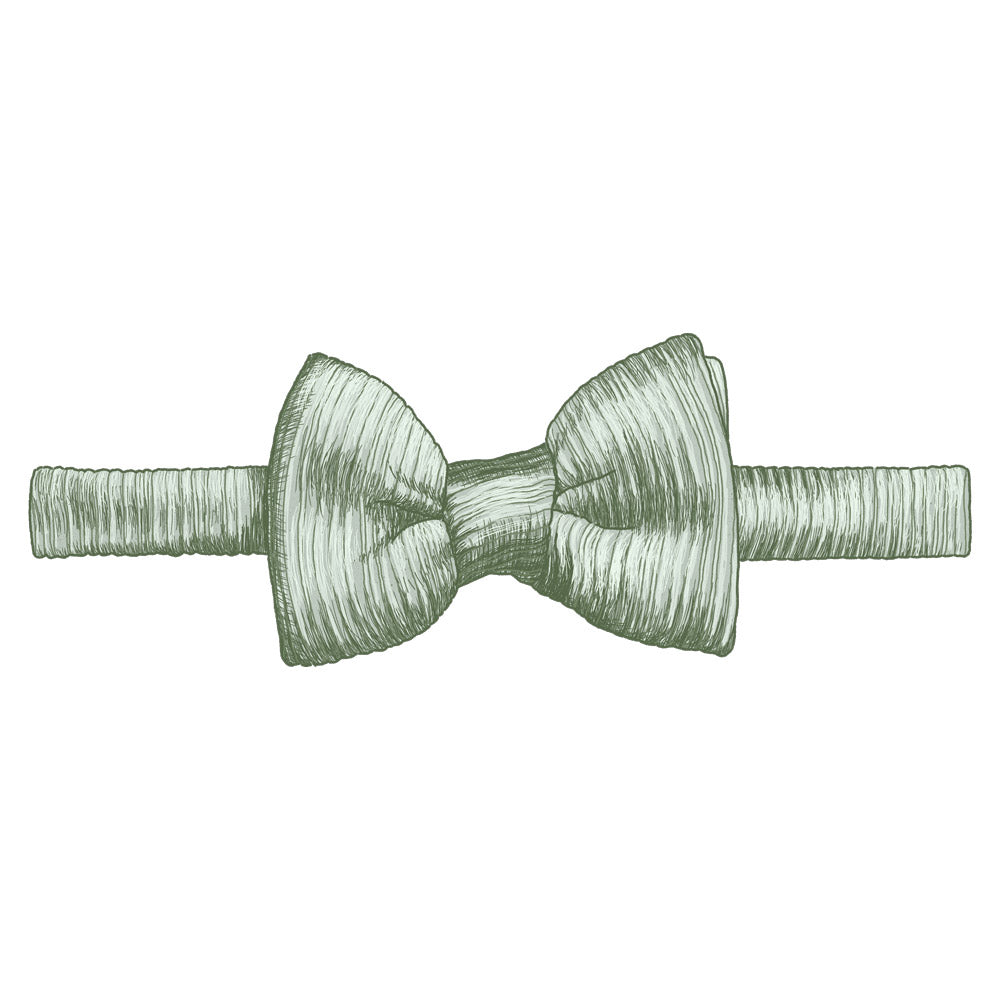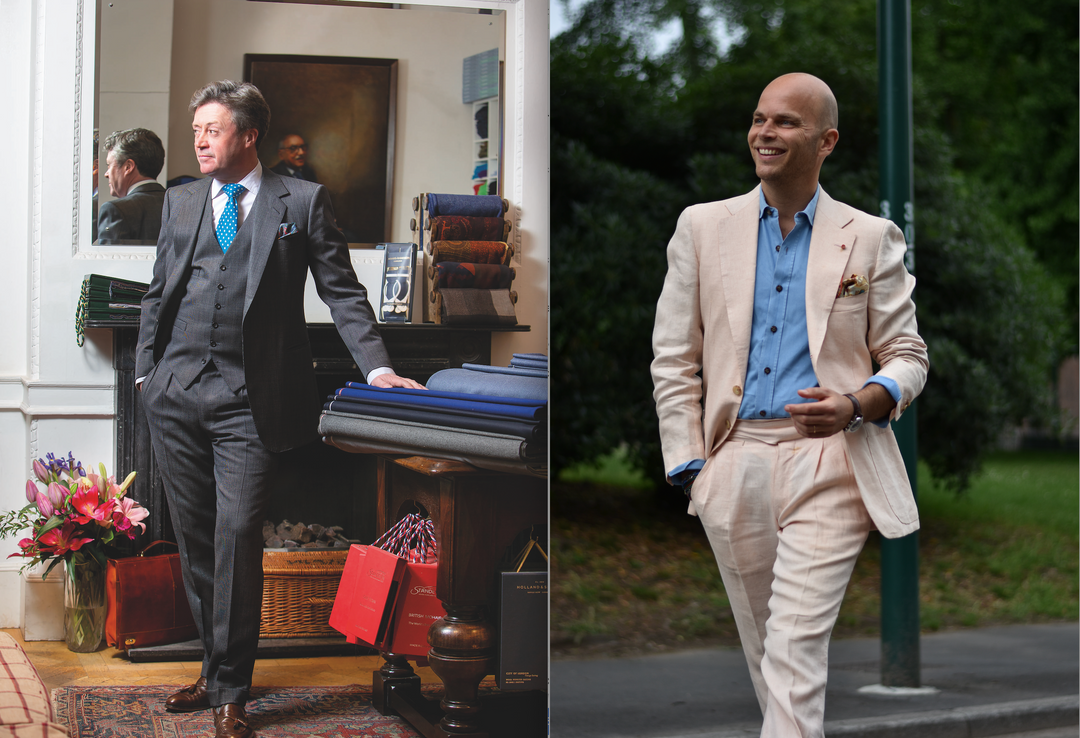Why do we wear ties? This seemingly simple question unveils a rich tapestry of history, style, and personal expression. In this article, we’ll explore the different types of ties, how to wear one, and what to look for when on the hunt for a quality tie. So, fasten your collar, adjust your Windsor knot, and join us on this journey through the captivating world of ties.
A Brief History of Neckties
Originally an accessory without a functional purpose, the tie has evolved into a significant part of our attire. In the 16th century, King Louis XIII of France was embroiled in a long and brutal war, which eventually left Europe devastated. But King Louis loved to dress well, regardless of the situation. His outfits were always well thought out and planned. One could say he was a lover of style and the finer things in life.
Louis hired soldiers from Croatia to add to his army. These foreigners used to wear a piece of knotted fabric around their neck called a cravat, and Louis took notice, incorporating this fashion statement into his own wardrobe. To ensure that his appearance remained flawless, he even appointed a specialist within his kingdom to solely manage his ties and cufflinks.
With the influential King Louis setting the stage, the popularity of the tie began to grow. Over time, the tie underwent several transformations, adapting to changing fashion trends and societal norms. Today, it has become a symbol of formality, with its absence leaving one feeling underdressed and incomplete.
How to Wear a Tie
There are only a few things to keep in mind when wearing a tie. Firstly, make sure that the front of the tie, called the front blade, ends at around your waistline (i.e., the top of your belt buckle). It should generally not be further than that or it could throw off your dimensions, so make sure to select a tie and knot it in a way that accords with your height. The thickness of the tie, its length, and the knot you choose will determine where it ends up resting.
Secondly, the width of a tie—when considering a classic look—should be around 3 ⅜” wide. Any wider, and you’ll be heading into kipper tie territory, which is no longer in style. Back in the day, people used to wear their ties short because it was trendy to wear high-rise, pleated trousers. To make this look work, men wore wider ties. In recent years, skinny ties have also made an appearance, but the trend didn’t last long. Ultimately, people always go back to the classic look: not too wide, not too slim, but just right.
Another thing to keep in mind is the balance between what’s called the front blade and the back blade; this is the wide front part of the tie and the thin back part of the tie, respectively. People like to wear these differently, but in general, the back blade is usually slightly shorter or equal to the front blade. But for that sprezzatura, casual look, some dapper gentlemen prefer the back blade to hang a little lower, and even consciously avoid putting it into the keeper—the loop that prevents it from dangling sideways. How you wear it is really up to you.
How to Buy a Quality Tie
When making a quality purchase decision, tie material and construction are of utmost importance. Because many opt for convenience and affordability, polyester is usually their go-to, but we strongly encourage you not to go this route. Why? For the simple reason that a quality tie looks 10x better. Its drape is superior, it has an exceptionally soft hand, and has a noticeably beautiful weave that enhances the look of your entire ensemble.Materials
Quality ties are always made from natural materials like silk, cotton, and wool.
The majority of luxury ties on the market are going to be made either from silk in whole or in part because there’s no other material that can match silk’s extraordinary characteristics. Whether it's a stunning grenadine weave or a printed tie to pair with your formal attire, you should almost always opt for silk.
Construction
You may not have thought about it quite like this, but a quality silk tie is really just a piece of art wrapped around your neck. With that said, a tie’s quality not only depends on the natural materials used in its making, but also the way that it’s woven and finished. Unfortunately, 100% silk doesn’t tell you much beyond the material used to construct the tie’s shell (i.e., the outer layer of the tie). It tells you nothing about the inner lining, how it's cut, the way the material is woven, etc.
Pro-tip: Make sure to buy from a reputable brand, preferably one that processes its silk in Europe. You may end up paying more, but the difference in quality is night and day.
• The Cut
• The Interlining
Pro-tip: Avoid cheap polyester interlinings. They’re stiff and don’t drape well or allow you to tie a nice knot. Always go for a natural material like silk or cotton.
• The Stitch
Types of Ties
Below is a summary of the three basic types of ties:
Printed Ties
Woven Ties
Knitted Ties
3-Fold vs 7-Fold Ties
A 3-fold tie is your classic tie that’s folded three times. It’s the most common type you’ll see, and it’s noticeable when you flip the tie over. In this case, less fabric was used in its construction, which makes it lighter and less wasteful. Some ties on the higher end don’t have an interlining. To avoid wrinkles, this type of tie uses double the material of a classic three-fold tie, and must be folded up to seven times to keep it from losing its shape. These ties are more expensive because of the materials and labor used in production.
Tipped vs. Untipped Ties
We talked about the inner material of the tie (i.e., the interlining) that lends the tie its shape. In some cases, this interlining is covered up by an outer lining called the “tip lining.” This is fabric, sometimes made from the same material as the outer shell (i.e., self-tipped), that adds some weight to your tie. On the other hand, an untipped tie will be a tad lighter. Perfect for more casual settings, they’re also finished with hand-rolled edges for an added touch of refinement.
A&S Necktie Collection
At Anatoly’s, we carry a selection of Italian neckties made by the esteemed company Paolo Albizatti. Designed for all occasions, each tie is cut and sewn with care using only the highest quality materials. Included in our collection are:
Silk Grenadine Ties:
These are versatile and beautiful pieces that work for varying levels of formality from semi-formal all the way up to formal. Check out our silk grenadine ties in light gold, merlot, purple, and more.
Print & Woven:
High quality screen printing and professional weaves are essential when producing a color pattern that looks natural to the eyes. Choose from floral, polka dot, medallion, solid, and paisley. From desert sand to terracotta, we have it all.Shantung:
For a casual option with a truly unique hand, opt for shantung. These ties are woven in Italy with a slub texture from the highest quality raw silk. Choose from onyx, cobalt, bordeaux, and more.









